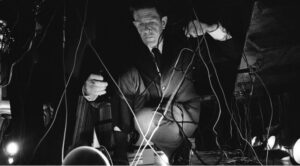Located on the corners of Broadway Street and Madison Street, the building now known as the Detroit Opera House first opened in 1922 as the Capitol Theatre. Designed by renowned Detroit architect C. Howard Crane, the theatre was, at the time of its gala premiere, the fifth largest in the world, and had been constructed with superb acoustics in the style of the grand European opera houses.
After 63 years of presenting both live performance and film, a fire led to the theatre’s closing in 1985. Three years later, David DiChiera would tour the abandoned facility and select it as the site of a grand new home for opera in Detroit.
But that dream was still a long way off. With an orchestra pit full of water (complete with a piano floating in it!), mold on the theatre seats, destroyed plaster, and crumbling walls, it would take millions of dollars and eight years before the restored Detroit Opera House would welcome its first audiences.
Dr. DiChiera’s vision would, in time, become a reality, paving the way for a revitalized section of downtown. Comerica Park would soon be a neighbor, followed by Ford Field and a host of restaurants, shops, and hotels.
Today we salute not only Dr. DiChiera for his vision, but the scores of people who helped to bring that vision to life, from MOT board and staff members, to patrons and donors, and the hundreds of artists and craftspeople who re-built the damaged and abandoned theatre into the grand hall we know today.
The Detroit Opera House: Before and After
Images: Cristina DiChiera, Santa Fabio, Jeff Garland, John Grigaitis Albert Kahn Collaborative, and Mark Mancinelli
The Grand Staircase


The Balcony


The Grand Lobby


Box Level


Main Floor
The Ceiling











